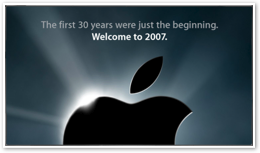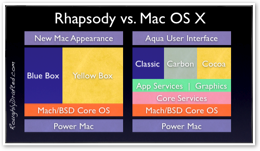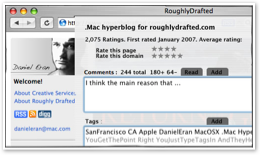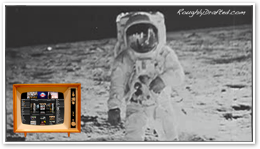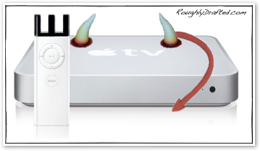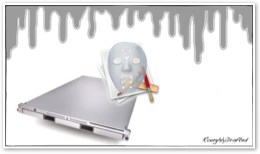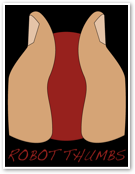

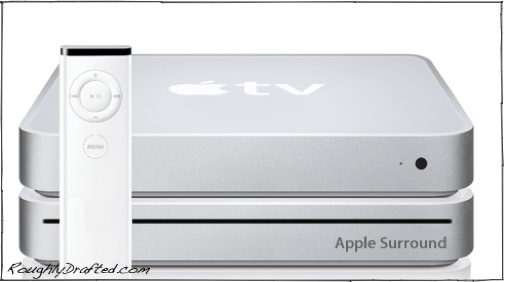
Yesterday's article presented the likelihood of any new iPhone news at WWDC, but it appears that this years’ event will be almost exclusively about Mac OS X 10.5 Leopard.
What's in store for developers? Here's my list of inevitable new releases, good possibilities, a few unlikely ideas that are still being rumored around, and a few wish list items that I just invented for fun.
Can a Leopard Change its Spots?
Apple announced that it would be distributing a feature-complete beta of Leopard at WWDC to all attendees.
Beta has lately come to be used as a euphemism for software that is “not quite finished yet,” but in the more serious circles of software development, beta specifically means feature complete and ready for final quality assurance testing.
Last year's developer preview of Leopard introduced the significant new features Steve Jobs highlighted in his keynote, but this year's beta promises to shed the remaining few secrets Apple has kept under wraps. What’s left to spot on Leopard?
Leopard User Interface Updates
In a series of Leopard wish list articles, a ‘fix the Finder’ series, a predictions article for last years’ WWDC, and a preview article for January's Macworld Expo, I presented and repeated a series of ideas I thought would make a lot of sense for Apple to present or polish. Among them were:
-
•Draggable Tabs standardized for all developers to take advantage of in their own apps.
-
•Multiple clipboards and Bonjour-enabled network clipboard sharing.
-
•Bonjour File Sharing as was recently delivered with the new AirPort Extreme.
-
•Apple Data Detectors, salvaged from the old pre-NeXT Apple advanced technology labs.
-
•Serviceposé, a way to use the great but mostly ignored Services features Mac OS X inherited from NeXTSTEP.
-
•A revised, Pro App interface that differentiates the Mac with a strong and consistent polished Aluminum look.
-
•Finder Plugins for previewing files and rendering representative file icons in the manner delivered in Vista.
-
•Improved remote management utilities.
-
•Remote Desktop features that were delivered as an extension of iChat video conferencing.
Other Leopard Technologies
Resolution Independence is a known known, but it appears the deadline for fully achieving this is closer to 2008. Along similar lines, support for multiple resolution bitmaps was reported earlier in relation to Safari and WebKit, allowing browsers to select and deliver the appropriate resolution of web page graphics for the DPI of the display being used.
Dr. Ken Tabb of the University of Hertfordshire suggests that the same technology may be used in conjunction with the iPhone. He also mentions that if and when Apple offers an SDK for the iPhone, it is likely that an iPhone emulator would also be offered, following the same pattern set when Apple offered G4 emulation that ran on G3 Macs, and allowing developers to extensively test features designed for hardware even if they did not own it.
Dr. Ken Tabb of the University of Hertfordshire suggests that the same technology may be used in conjunction with the iPhone. He also mentions that if and when Apple offers an SDK for the iPhone, it is likely that an iPhone emulator would also be offered, following the same pattern set when Apple offered G4 emulation that ran on G3 Macs, and allowing developers to extensively test features designed for hardware even if they did not own it.
Quartz 2D Extreme should be a step closer to reality, particularly since far more of the installed base of Macs can now support this. Expect more apps to make use of Core Graphics, Core Video, and Core Animation effects in new ways as the video graphics hardware to support this becomes increasingly optimized by Apple.
Mac OS X already has support for a USB iSight, so perhaps Apple will release one for the Mac Pro desktops.
Booty Plundered from OpenSolaris. It is no secret that Apple has adopted a number of technologies recently opened up to the community by Sun as part of its OpenSolaris project.
For example, Apple has already demonstrated its adaptation of DTrace--a unique feature of Solaris used by developers to troubleshoot their apps--as part of its new suite of Xcode tools in Leopard.
Sun's ZFS, once called the Zettabyte File System, is the other buzzword prediction for WWDC. Sun added support for its modern new ZFS to Solaris in 2005, but has since released it as an open source project as well. Apple wasted no time in adapting it to work in Mac OS X.
Just days ago, Marc Hamilton, Sun’s VP for Solaris Marketing, reported “Apple will announce this week that the ZFS file system from OpenSolaris will become Apple’s new default file system,” but later edited his comments to remove the word “default.”
That was considered news, despite the fact that we already knew Apple was adding ZFS support in Leopard, and that we also really know that there is no way Apple could yank HFS+ as the default file system in Mac OS X 10.5 without creating serious problems for users, despite the benefits of ZFS.
Given that Sun has not yet even delivered ZFS as a bootable root file system in Solaris, it would be a bit of a stretch to think Apple would beat Sun to the punch, or even work to try.
Sometimes too much of a good thing is a bad thing; making a blind jump into a brand new file system would certainly appear to be a reckless development decision, with little upside for users. Using ZFS certainly does not require booting from ZFS.
Apple and Too Much Sun. Beyond raiding the OpenSolaris cookie jar, reader Adam Drew reports that there has recently been a minor outbreak of speculation regarding how great the rest of Sun's peanut butter might taste alongside Apple's chocolate, and vice versa, ushering in a wondrous new a lineup of high tech Reese’s products.
Like many tech rumors, this one can trace its origins back through several generations of partnership/merger/buyout rumors related to the two companies that date back into the early 90s. The most recent version predicts two outcomes:
Chocolate Peanut Butter: Mac OS X retrofitted with the Solaris kernel. Just a year ago, the rumor mill said Apple needed the Linux kernel. I explained several reasons why this wasn't going to happen. This year, I similarly don't think Apple will be abandoning its own kernel development for Sun's, particularly this late in the game.
If it were Solaris that uniquely ran Final Cut Pro, Logic, and Shake, this might make some sense. But while Solaris offered one of the best commercial Unix implementations several years ago, the current fortunes of Sun and its decade long of focus on Java at the expense of Solaris has resulted in Solaris only offering a handful of really remarkable features primarily within the server market that Sun competes in as a company.
Now that Sun is offering its code under OpenSolaris, Apple can pick and choose from those features and adapt them to work in Leopard. Doing this does not require a wholesale migration to Sun's kernel; such a step makes no sense for a number of reasons, may of which are similar to those I presented earlier in regard to Linux.
While well suited to running server applications, Sun has never successfully delivered a serious desktop platform with a critical mass of office applications on Solaris. It is worth noting that Sun tried to do so with Solaris for Intel around the same time that NeXT was struggling to sell NeXTSTEP/386 for standard PCs, back in the early 90s.
Since then, Solaris on the desktop has fared far worse than even Linux on the desktop. Even in the server space, Solaris has struggled to remain relevant in the face of new competition from Linux. The Solaris kernel is certainly no magic silver bullet that works in every gun, nor is it in any way really relevant to Apple.
Solaris belongs to the SVR4 branch of commercial Unix, which if anything, makes it closer to Linux than the BSD code used by Mac OS X. Further, Mac OS X uses a specialized Mach hybrid version of BSD that bears even less relation to other 80s-style Unix kernels, making any rumors of a Solaris/Linux/Unix kernel transplant absurd.
In contrast to Sun’s limited adventures on the desktop, NeXT maintained serious development of its desktop OS for several years, after which it was then absorbed by Apple and eventually became the foundation of Mac OS X.
At this point, over ten years of furious desktop-centric development have been invested in Mac OS X by Apple. That pushes the notion of any wholesale replacement of significant portions of Mac OS X with Solaris well beyond the usual threshold for branding an idea as absurd. 

Apple is marketing Mac OS X primarily as a desktop OS, so few of the actual advantages of Solaris would even really be useful to Apple.
On top of that, the purported server and or kernel problems in Mac OS X are overblown. Remember that Apple itself uses Mac OS X to power its iTunes Store and other large scale web services.
Peanut Butter Chocolate: Sun Solaris adopting Apple's Cocoa frameworks. This second Sun/Apple rumor is loosely based on the history of Sun’s partnership on NeXT's OpenStep back in 1996, shortly before Sun yanked its support to focus on its own Java.
Sun certainly did help deliver the OpenStep specification. However, in the decade following Sun and HP's abandonment of the OpenStep platform, Apple started over with the original NeXTSTEP frameworks--not OpenStep--and made substantial changes to integrate its own core technologies.
While Mac OS X has things in common with OpenStep, the two are more different as platforms than are Windows 95 and Windows Vista, which represent a similar decade of difference between them.
The reasoning behind “Cocoa Solaris” follows a tack similar to the Cringely Theory of Apple and Microsoft, in which Mark Stephens popularized the idea that the patent cross-licensing agreement between Apple and Microsoft back in 1997 somehow gave Apple full access to all of the Windows APIs and even its source code.
For some reason, this made it “almost certain” that Apple would soon abandon a decade of Cocoa development to instead deliver an oddball version of Windows that works on Macs, or perhaps a new version of Mac OS X designed to run Windows apps in the manner of OS/2, whichever sounds more tantalizing.
Again, for some of the same reasons that Apple won't deliver a Red Box of magical Windows compatibility in Leopard, Sun will similarly not be able to deliver a Yellow Box of Mac OS X compatibility for Solaris, despite having a slew of old OpenStep apps locked up in its basement.
Even if Apple and Sun did collaborate on porting Cocoa to Solaris, a large portion of Mac software--including the more attractive bits such as Photoshop and Office--would not work anyway, because they are not Cocoa-only.
The most impossible problem to step around, however, is that any of Sun's customers who really want to run Mac apps have already bought a Mac. This is one peanut butter cup that simply has no reason to exist.
Apple and Google: iPhone, .Mac. and Apple TV Partnership Potential.
What about Apple and Google? Rick Beemsterboer of Amsterdam says Google Gears would make sense on the iPhone as a development tool, enabling iPhone web applications to go offline and then sync when a network connection is reestablished. That functionality, he points out, could tie the iPhone into both Google's services and new and existing services offered as part of Apple's currently long-in-the-tooth .Mac.
I am not the only one waiting for Jobs to announce significant changes to .Mac, but I have possibly generated the most speculation about what Apple could do, were it inclined to offer services people actually find useful. I would also like to point out that Apple could charge more for .Mac if it would actually offer services of real value.
The most other obvious Google collaboration--beyond the iPhone client for Google Maps--is the recently announced Apple TV client for YouTube. It's interesting that little has been said about Apple TV and the third party possibilities it suggests, in the same sort of volume that has badgered the iPhone. I started hammering on the potential of Apple TV before it was even released, and haven’t stopped yet.
The Apple TV essentially is open already. Third party developers have already discovered how to write plugins that add new modules of functionality to it. Why not officially release a full SDK for building Apple TV plugins, and allow developers to expand it beyond the capabilities Apple devised internally?
One idea others have suggested is a client for viewing Google's Picassa or Yahoo's Flickr photo albums. Photo viewing is already the most obvious killer app for the Apple TV, despite critics' rage all being hinged upon the movies and TV options currently available from iTunes. It is also fantastically easier to deliver photos over the web than to stream video at a bitrate that will impress people who have already watched HDTV.
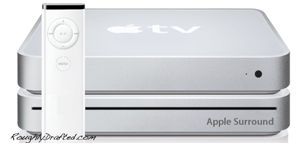
Apple Surround
My other idea for Apple TV is a matching expansion companion box that provides the missing bits Apple forgot to include in the core Apple TV itself. I'll call it Apple Surround.
Imagine an identical box that connects to the Apple TV via its USB port, including a DVD player as well as Bluetooth support to enable use of an iPhone or other Bluetooth device as a sophisticated remote control.
Bluetooth would also allow users to interact with a wireless keyboard and a Wii-like controller, enabling the potential for more sophisticated application modules and active games for the Apple TV.
No doubt third party developers would be happy to oblige, knowing that their apps sold through iTunes would likely require less support and generate more profits at lower retail prices and higher volume than comparable shareware for the PC or Macs. Everyone paying $5 works a lot better than a few people paying $20, and most people paying nothing.
The real killer feature for Apple Surround would be a DTS/AC3/AAC 6.1 surround decoder, enabling Apple TV to play both DVDs and iTunes movie downloads with full digital surround, rather than relying on an external stereo amp. It would be bundled with six wireless surround speakers and an ELF subwoofer. Look mom, no wires!
Such products already exist, but Apple could certainly bring wireless surround mainstream and turn its Apple TV hobby into a strong product that would complete Apple's subsuming of the legacy of Sony in the home.
This would help establish the company in its iTunes movie store aspirations, and help narrow the gap between the marginal iTunes content now available, and the HD discs that push the envelope of home theater luxury.
Mac Nano
In the same fit of imagination, I decided Apple should rebrand the Mac Mini as the Mac Nano, and ship it in a slightly thicker Apple TV form factor. It could also be used with Apple Surround, for users who want the increased power and flexibility the Nano would provide over the more appliance-like Apple TV.
New iMacs?
They say new iMacs, but in brushed metal? I think the brushed metal appearance left town a year ago. Perhaps new iMacs, or a iMac Pro, might arrive in the polished Aluminum finish of the Apple TV, creating a new industrial design language for a range of Apple's home products, or perhaps expanding upon the white Home and aluminum Pro lines with a middle Prosumer level that incorporated bits of each. Just don't call it the Mac Centris!
Xserve Mini!
This was nearly delivered in the new AirPort Extreme, although a version capable of running my killer telephony app and offering Gigabit Ethernet would be nice to see.
A pro version of the AirPort Extreme might even be a better idea than the mini version of the Xserve that I imagineered.
My Usual Wish Lists. While I got a lot of the things I asked for earlier, there are a few things that I still want:
Applications and Services
-
•Xphone, a PBX telephony server for the Xserve. This only needs to be a layer of Apple UI for Asterisk.
-
•Press Pro, a high end Pro version of Page and iWeb.
-
•Significant updates to .Mac. What is Apple doing in online services? Jobs says something will be announced soon, which might mean WWDC.
-
•iWork Leopard with a new spreadsheet database hybrid, HyperCard-like, Core Data app.
-
•iLife Leopard with a drawing and painting app for embellishing photos and video clips.
Since both iWork and iLife appear to have been tied to Leopard--which makes a lot of sense given the new support in Leopard for developing applications--expect the unveiling of new creative and office applications that show off the features of Leopard.
Like reading RoughlyDrafted? Share articles with your friends, link from your blog, and subscribe to my podcast!
Did I miss any details?

Haloscan Q107
 Bookmark on Del.icio.us |
Bookmark on Del.icio.us |  Discuss on Reddit |
Discuss on Reddit |
 Critically review on NewsTrust
Critically review on NewsTrust
 Forward to Friends |
Forward to Friends | 
 Get RSS Feed |
Get RSS Feed |
 Download RSS Widget
Download RSS Widget
Check out the Daily Show Multi-Pass on iTunes.com

This Series
More Predictions for WWDC 2007: Solaris, Google, Surround
Sunday, June 10, 2007

Ad




